Learn more about riparian buffers, their benefits, and what you can do to help improve riparian buffers near you.
Riparian Forests in Tennessee StoryMap
What is a riparian buffer?
A riparian buffer is a transitional zone between land and water where a mixture of trees, shrubs, grasses, and wildflowers grow. Riparian buffers are located along streams, rivers, lakes, and reservoirs. They perform essential ecological functions that support local plant and animal biodiversity, water quality, and soil quality.
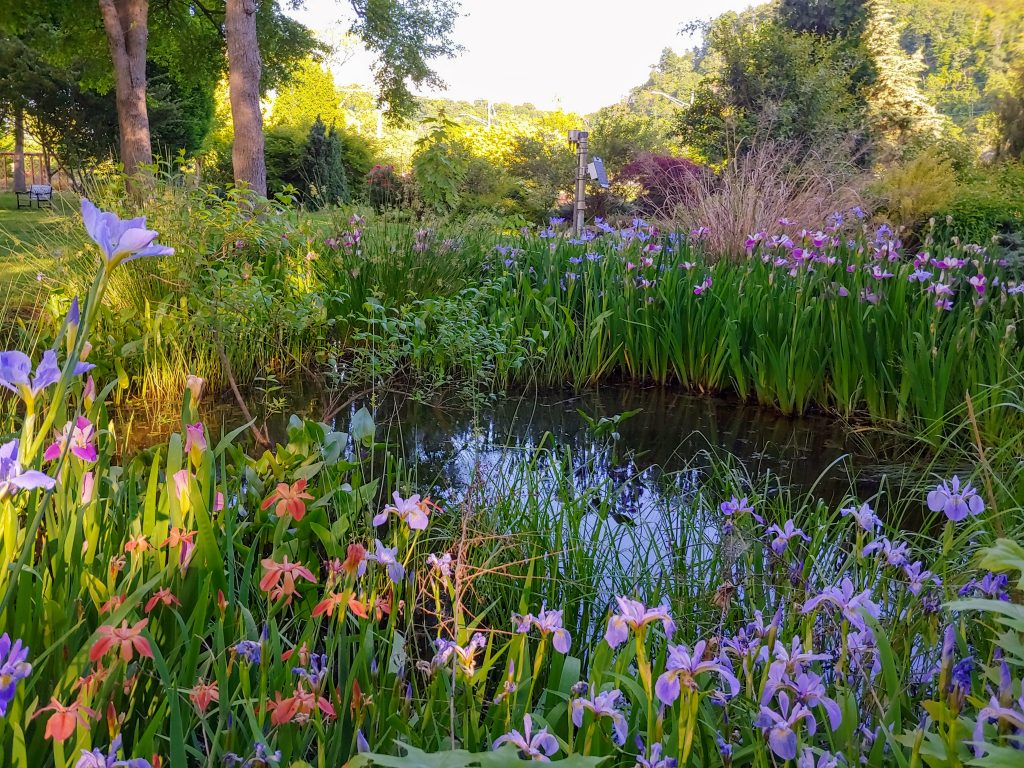
What does a healthy riparian buffer look like?
As with any type of forest, a riparian forest has a few characteristics that contribute to its quality and function overall.
Width
Though the ideal width of a riparian buffer varies depending on a variety of factors such as topography, in general the riparian buffer should be about 30-40 feet on either side of the stream bank.
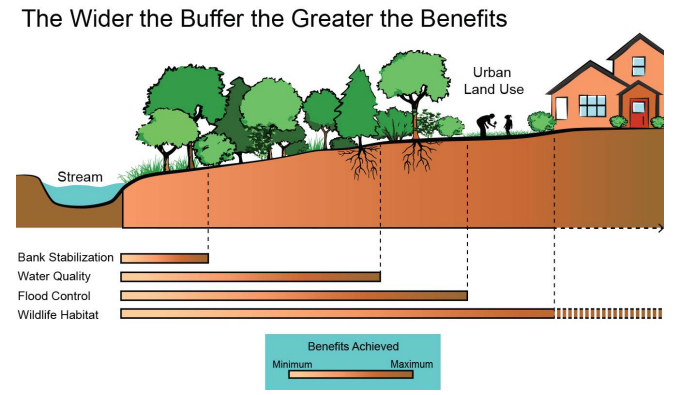
Vegetation Composition
In order to fully achieve maximum ecosystem services, a healthy riparian buffer will be comprised of a variety of different types of vegetation, including; mature trees, shrubs, grasses, flowering plants, etc…
In addition, the understory must not be shaded out by invasive species.
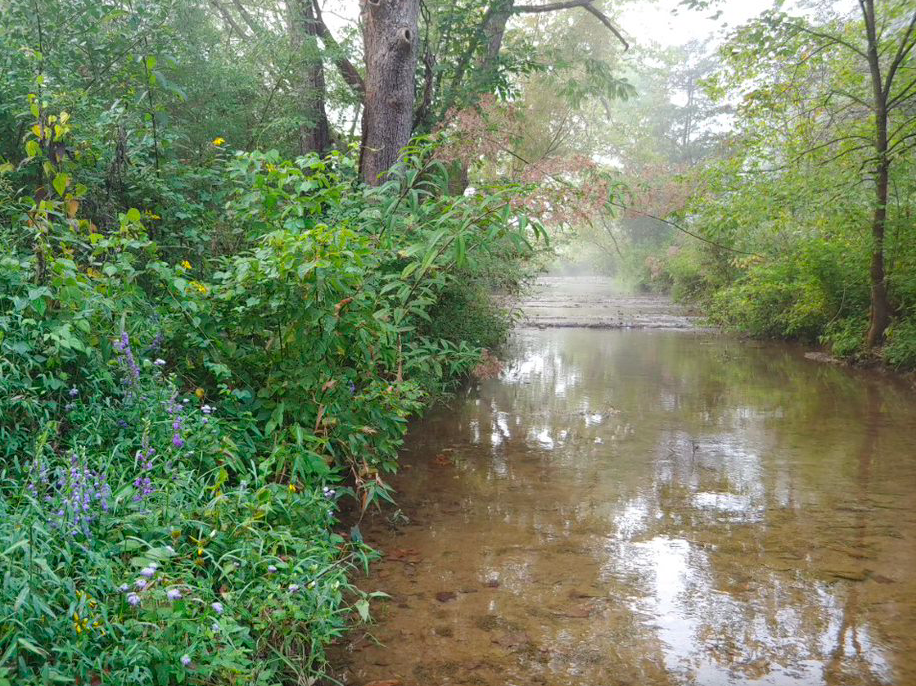

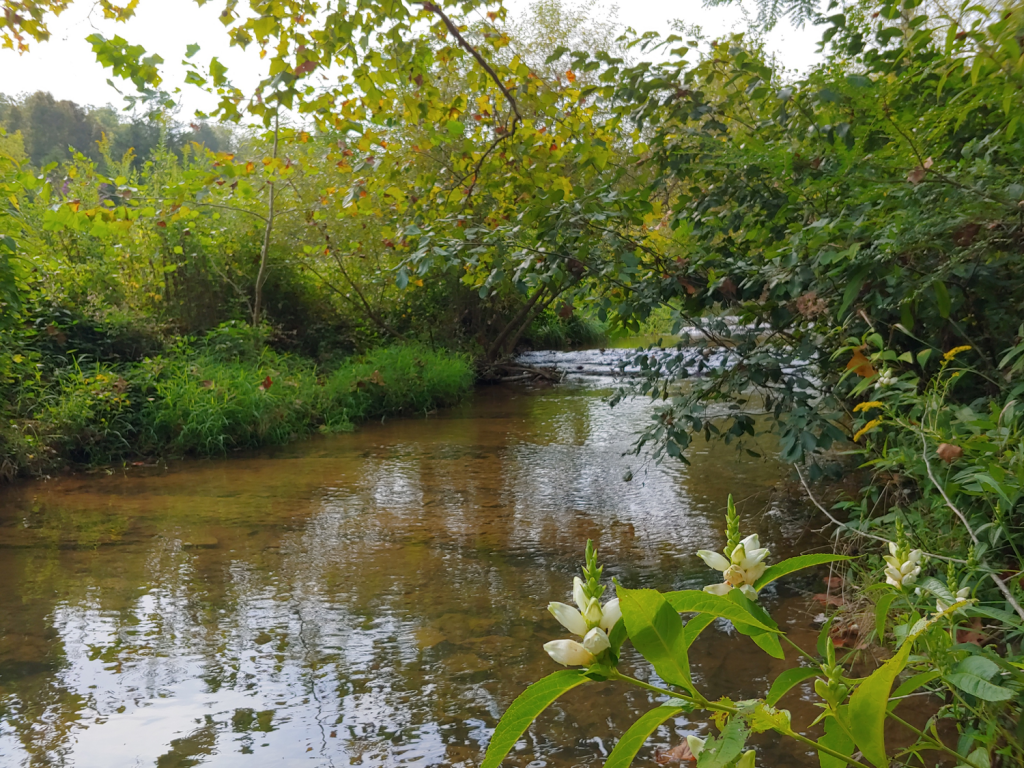
What ecosystem services do riparian buffers provide?
Riparian buffer zones are an essential part of a healthy and functional stream ecosystem, and provide numerous ecosystem services essential to maintaining water quality.
| Bank Stabilization | Stabilize stream banks by creating a network of plant roots to hold soil in place and reduce bank erosion, and reduces sediment pollution in waterways |
| Water Quality | Filter storm water and runoff by slowing down and trapping pollutants such as nutrients, sediments, and pathogens. Pollutants can then infiltrate the soil and be broken down by microbes, which can be absorbed by the buffer’s plants which increases water quality . |
| Flood Control | Create space to store excess water from heavy rains, helping to prevent flooding and improves the health of flood plains. |
| Wildlife Habitat | Areas of native vegetation supports local biodiversity by providing resources to wildlife as well as corridors for wildlife movement. Vegetation also contributes organic matter which serves as a food source for insect larvae and other bottom dwelling organisms. Provides shade to aquatic habitats, cooling water temperatures. |
| Aesthetic and Recreational Value | Communities with healthy waterways and more green space in general are happier and healthier. |
Riparian buffer quality has been declining… why?
Riparian buffers face many causes of threats that lead to excessive invasive species, and reduced width and vegetative diversity. Even further, there are factors that make restoration of these areas difficult or impossible. These threats include…
- Urban development and construction near a streambank edge.
- Removal of vegetation for aesthetic or safety purposes.
- Previously existing infrastructure such as utility easements that makes restoration and planting difficult.
- A general lack of awareness or understanding of riparian buffers among private residents.
- Lack of resources among local municipalities and nonprofits to address these issues, such as staffing, funds, and training.
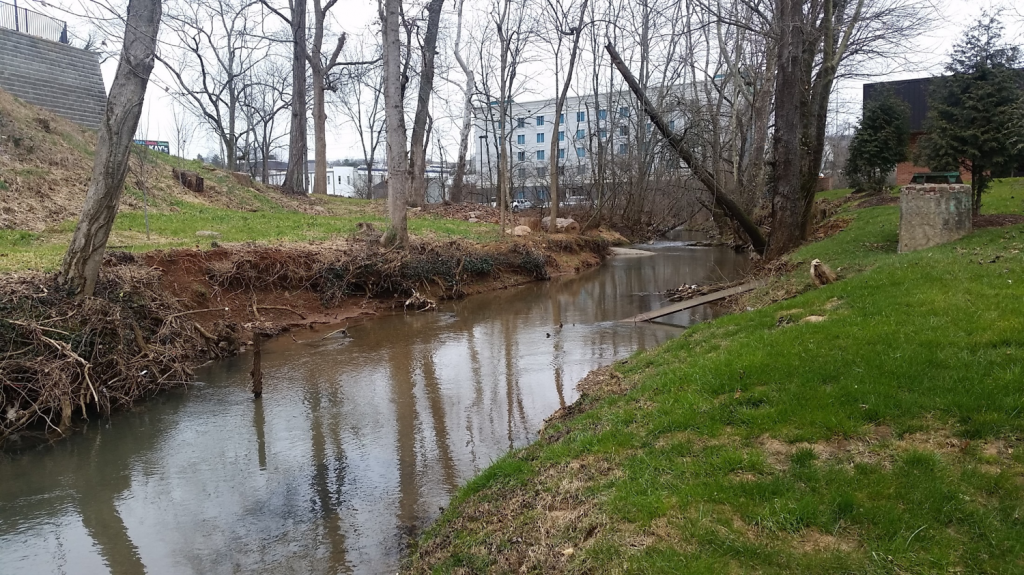
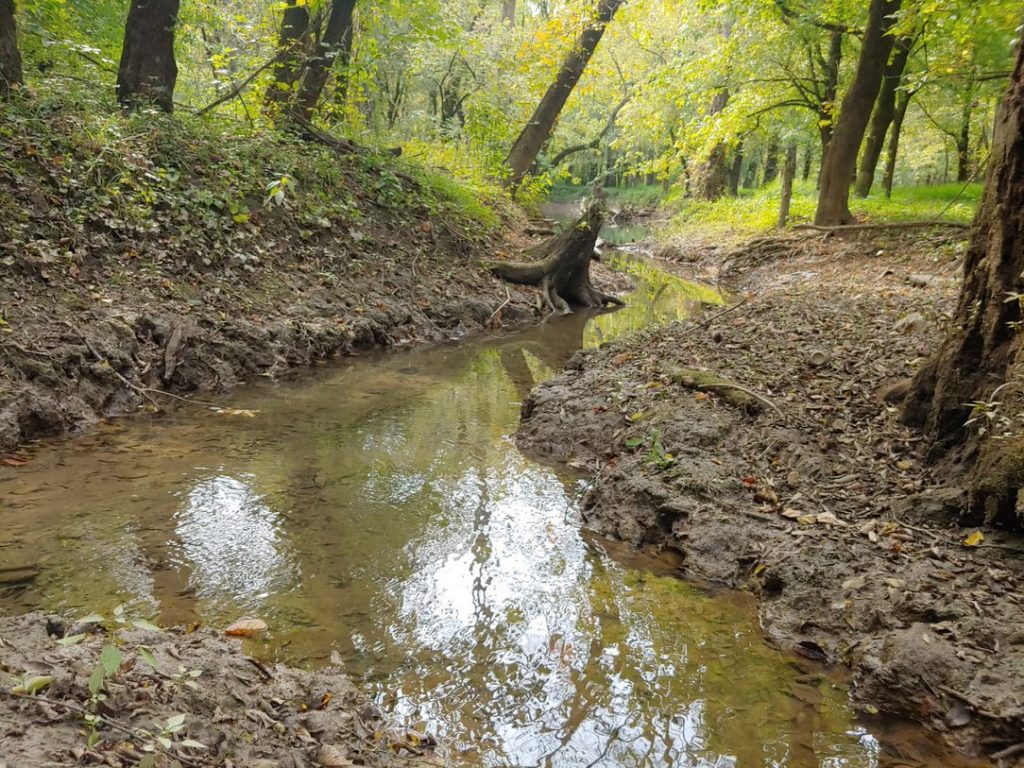
What are some things you can do to help?
Tennessee’s cities are developing rapidly, which means riparian buffers are increasingly threatened with impairment. The Community Riparian Restoration Program for Tennessee aims to educate people like you to take actions to protect existing buffers and establish new ones. Here are some things you can do to protect your local buffers!
In your yard…
- Planting native woody vegetation such as trees and shrubs, as well as grasses and flowering plants on your stream side property.
- Refraining from mowing on or near the banks edge. Give at least 15 feet of space between mowed portion and stream edge.
In your neighborhood, city, or town.
- Keep an eye out for areas that are lacking stream-side vegetation, especially open grassy areas that are unobstructed by sidewalks and roads.These areas present excellent opportunities for restoration.
- Contact local nonprofits or in your area that focus on environmental restoration to discuss potential restoration projects.
- Contact your local stormwater department to report an impaired buffer. Often these departments have funds that must be allocated to buffer restoration.
In your state/county…
- Get involved and stay updated on local and state government policies related to stormwater, stream protection, and development policies. Educated and involved citizens are the best resource for protecting waterways and forests for all!